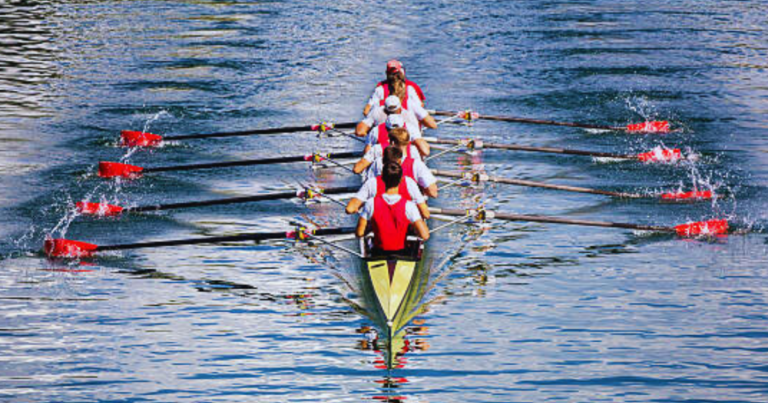It’s a gorgeous summer morning, and you’re itching to get out on the water. But here’s the million-dollar question should you grab a paddle or some oars? As someone who’s face-planted into the water more times than I care to admit, I feel your pain.
When I first dipped my toes (quite literally) into the world of water sports, I was utterly bamboozled by the choices. Kayaking looked cool and kinda scary, while rowing seemed like something out of those fancy English universities. But don’t worry, my friend I’ve got your back.
In this article, we’re gonna dive deep into the kayaking vs. rowing debate for us newbies. Trust me, by the time we’re done, you’ll be itching to hit the water hopefully with a bit more grace than I did on my first outing.
Oh, and did you know that both these sports have seen a massive surge in popularity recently? Yeah, turns out I wasn’t the only one daydreaming about escaping the grind and finding some peace on the water. According to the Outdoor Foundation’s 2023 Outdoor Participation Report, kayaking saw a 12% increase in participation from 2019 to 2023, while rowing clubs reported a 15% rise in membership applications over the same period.
So, buckle up (or should I say, life jacket up?) as we paddle through the ins and outs of kayaking and rowing for beginners. We’ll cover everything from how to not fall out of your boat (important life skill, folks) to which sport will give you those enviable arm muscles. Let’s dive in.
Understanding the Basics: Kayaking vs. Rowing
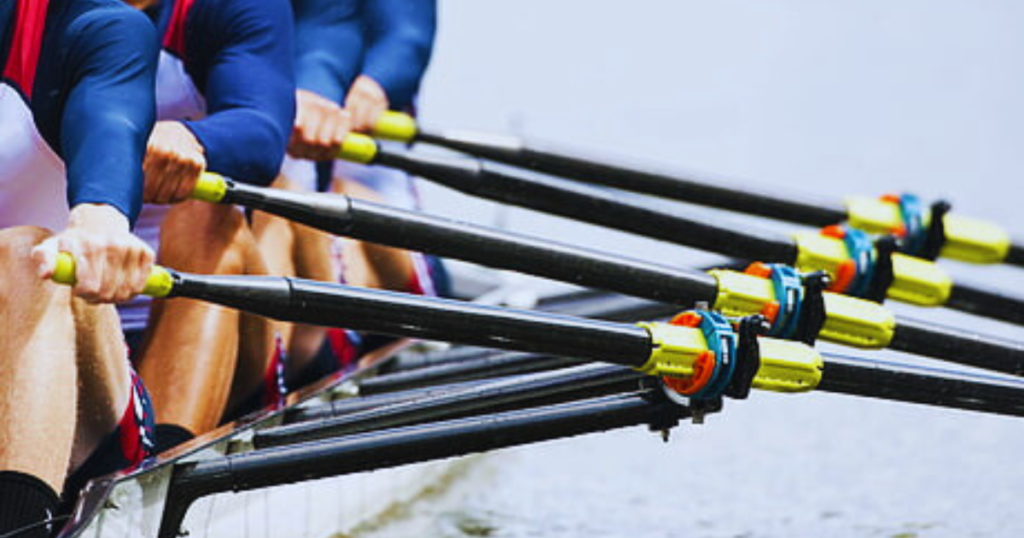
Let me tell you, when I first started out, I couldn’t say to a kayak from a canoe if my life depended on it. But fear not, I’ve done the heavy lifting (or should I say paddling?) for you.
Kayaking is like the cool, laid-back cousin of canoeing. You’re sitting in this nifty little boat, wielding a double-bladed paddle. The key here is that you’re facing forward, which is great for those who like to see where we’re going (raises hand enthusiastically).
Now, rowing? That’s where things get a bit more… athletic. You’re typically in a longer, narrower boat called a shell, and here’s the kicker you’re facing backward! I know, right? It felt so weird at first, like trying to parallel park while looking only in your rearview mirror.
The big difference? In kayaking, you’re using mostly your upper body and core, facing forward, and usually flying solo. Rowing, on the other hand, is a full-body workout where you’re facing backward and often part of a team. Trust me, coordinating all those body parts while going backward? Let’s just say it wasn’t pretty at first.
Learning Curve: Which is Easier to Pick Up?

Let’s talk about the learning curve for these water sports. Spoiler alert: I’ve fallen into the water trying both, so I’m speaking from some very damp experience here.
Kayaking, in my humble opinion, has a gentler learning curve. The basics of sitting in the boat, holding the paddle, and moving forward can usually be picked up in a single session. I remember my first successful kayaking trip. After about an hour of zigzagging across the lake like a drunken duck, something just clicked. Suddenly, I was gliding through the water, feeling like some sort of aquatic ninja. It was magical.
Now, rowing? Oh boy, where do I start? Learning to row is like trying to do the cha-cha, the robot, and the moonwalk all at once while balancing on a moving platform. It takes a bit longer to master, but once you get it, it’s like riding a bike. A really long, skinny bike that floats on water.
In terms of time to proficiency, most people can get comfortable with basic kayaking in a few outings. Rowing might take a few weeks or even months to really get the hang of, especially if you’re aiming for proper technique. But don’t let that discourage you the sense of achievement when you finally nail that perfect stroke is worth every wobble.
Equipment Needs: Gearing Up for Your New Hobby
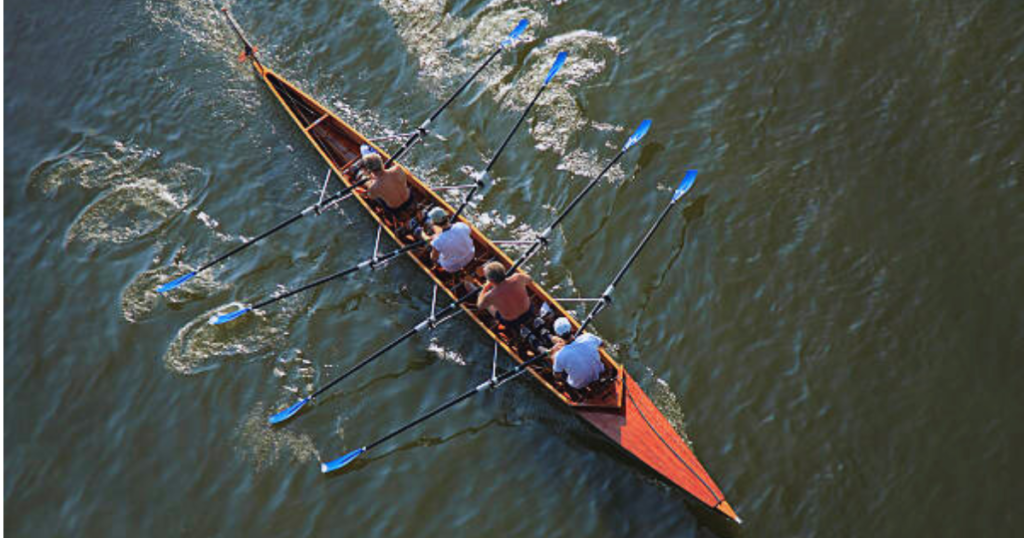
When I first started out, I thought all I needed was a swimsuit and a can-do attitude. Spoiler alert: I was very, very wrong. But don’t worry, I’ve made all the mistakes so you don’t have to.
For kayaking, you’ll need a kayak (duh!), a paddle, a Personal Flotation Device (PFD), appropriate clothing, and sun protection. Trust me, you don’t want to look like a lobster after your trip. I once used a paddle that was too long and ended up spinning in circles like a deranged ballerina. Learn from my mistakes, folks.
Rowing gear typically includes a rowing shell, oars, a rowing seat pad (your bum will thank you), appropriate clothing, and rubber boots or water shoes. The good news? If you join a club, they often provide big-ticket items like the shell and oars.
Cost-wise, kayaking can be more accessible for individual beginners. You can get a decent recreational kayak setup for anywhere from $300 to $1000. Rowing often involves joining a club, with memberships ranging from $200 to $500 or more per year.
Here’s a Pro Tip: Don’t go all out on gear right away. When I started, I bought every gadget and gizmo I could find. Ended up with a garage full of stuff I never used and a very confused look from my partner. Start with the basics, and upgrade as you go.
Physical Demands: Fitness Requirements and Benefits
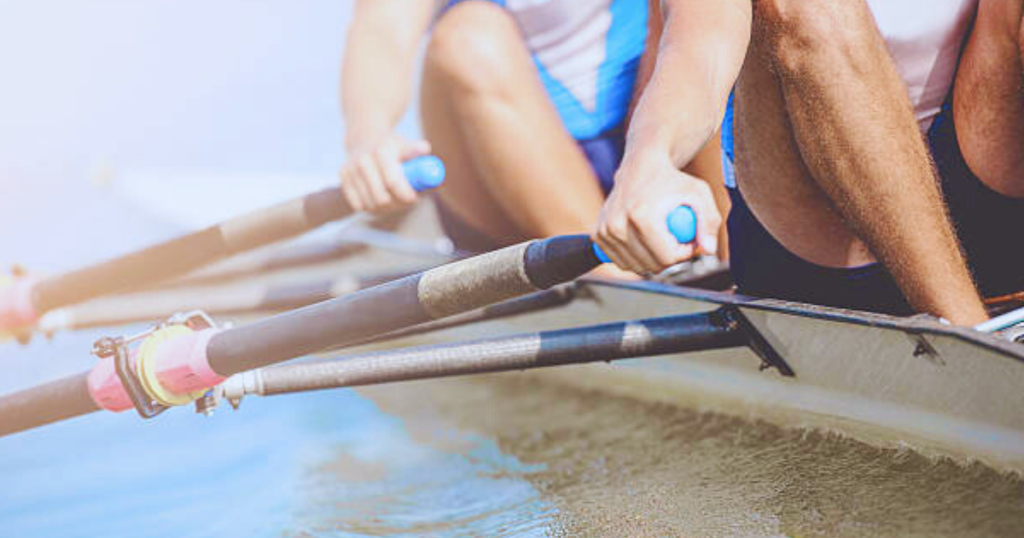
Let’s talk about the nitty-gritty of what these sports do to your body. Spoiler alert: they’re both fantastic workouts but in different ways. And trust me, I’ve felt muscles I didn’t even know existed after trying both.
Kayaking works your core muscles, upper body, and even your legs for stability. It’s a low-impact cardio workout that also builds strength. Plus, you’re out in nature, which is great for mental health. I swear, nothing clears my head like a good paddle session.
Rowing, on the other hand, is a full-body workout that combines cardio and strength training. Your legs, core, and upper body all get in on the action. When I first started rowing, I felt like I had run a marathon and lifted weights… all before breakfast.
Both sports are excellent for improving cardiovascular health, building strength, and boosting endurance. They’re also great for weight loss if that’s your goal. I swear, kayaking and rowing did more for my waistline than any crazy diet ever did.
Versatility and Accessibility: Where Can You Practice?
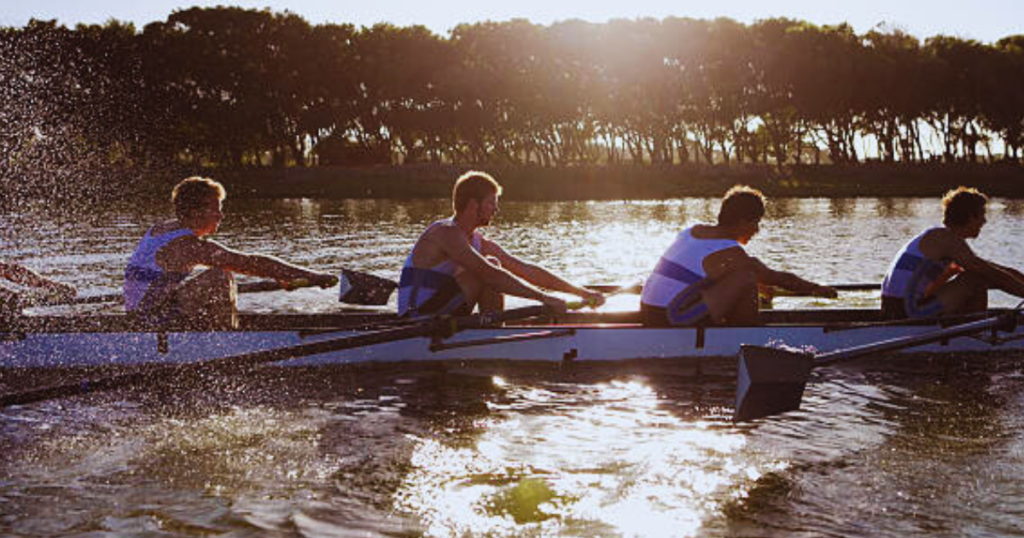
One of the coolest things about these sports is how versatile they are. Kayaking? You can do it practically anywhere there’s water. Lakes, rivers, even the ocean if you’re feeling adventurous (and have the right skills and equipment). I’ve kayaked in everything from serene mountain lakes to choppy coastal waters. Each experience is unique and exciting in its own way.
Rowing typically requires calmer, more open waters. Think lakes, wide rivers, and protected bays. The good news is, that many cities have rowing clubs on nearby bodies of water. I was surprised to find a thriving rowing community right in my urban backyard.
Accessibility-wise, kayaking often has the edge. You can throw a kayak on your car roof (with the right rack, of course, learn from my kayak flying off on the highway incident) and head to the nearest water body. Rowing, being more equipment-intensive, usually requires you to be near an established rowing center or club.
But here’s the thing both sports offer amazing opportunities to explore your local waterways and connect with nature. Whether you’re gliding through a misty morning in your kayak or synchronizing your strokes with your rowing team, you’re in for a treat.
Social Aspects: Solo Adventures vs. Team Dynamics
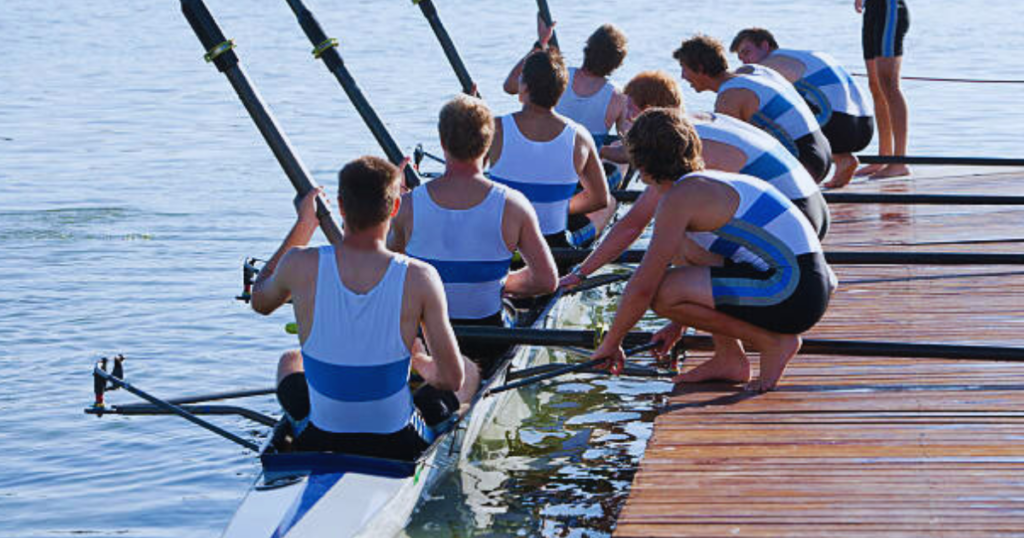
Here’s something I didn’t expect when I started: these water sports have totally different social vibes.
Kayaking can be a wonderfully solitary experience. It’s just you, your paddle, and the great outdoors. Perfect for those I need to get away from everyone days. But don’t worry, social butterflies there are plenty of kayaking groups and meetups if you prefer paddling with pals.
Rowing, especially if you’re doing it the traditional way, is all about teamwork. There’s something magical about being in perfect sync with your crewmates, oars cutting through the water in unison. It’s like a dance, but wetter. And with more potential for accidentally whacking each other with oars (sorry about that, Steve from the rowing club).
Both sports have vibrant communities. Kayakers often gather for group paddles, skills workshops, and the occasional post-paddle beer. Rowing clubs are social hubs, with regular practices, regattas, and enough team spirit to rival a high school pep rally.
Safety Considerations for Beginners

Last but definitely not least, let’s talk safety. Because trust me, you don’t want to end up like me on my first solo trip, clinging to my overturned kayak and wondering if the fish were judging my poor life choices.
For kayaking, always, ALWAYS wear your PFD. No exceptions. Learn some basic self-rescue techniques, like how to get back into your kayak if you capsize. And please, for the love of all things aquatic, check the weather before you go out. I learned that lesson the hard way when a sudden storm turned my peaceful paddle into a scene from The Perfect Storm.
Rowing safety is all about awareness. You’re going backward, remember? So you need to be extra vigilant about your surroundings. Most rowing clubs will teach you the basics of water safety, boat handling, and what to do in case of emergencies.
For both sports, it’s crucial to know your limits. Start in calm, sheltered waters and gradually work your way up to more challenging conditions. And never, ever go out alone until you’re confident in your skills and have told someone your plans.
Conclusion
We’ve paddled through the ins and outs of kayaking and rowing for beginners, and I hope you’re feeling as excited as I am about hitting the water! Whether you choose the serene glide of a kayak or the rhythmic teamwork of rowing, you’re in for an amazing adventure. Remember, the best water sport is the one that gets you out there, enjoying nature, and maybe working up a sweat (or getting a little wet).
Don’t stress too much about picking the perfect sport why not try both if you can? The water’s calling, my friends, and trust me, answering that call is one of the best decisions you’ll ever make. So grab a paddle (or oars), slather on that sunscreen, and get ready to create some ripples.
Frequently Asked Questions
I can’t swim very well. Can I still try kayaking or rowing?
Absolutely! But let me tell you, I was in the same boat (pun intended) when I started. The key is to always wear a properly fitted Personal Flotation Device (PFD). It’s like having your own personal floaties, but way cooler. Plus, many beginners’ courses start in shallow water or pools. Just be upfront about your swimming skills with your instructor they’re there to help, not judge.
Which sport burns more calories, kayaking or rowing?
Ooh, the eternal question for us fitness buffs! Generally speaking, rowing tends to burn more calories because it engages more muscle groups. But here’s the thing it really depends on how hard you’re working. I’ve had kayaking sessions where I felt like I’d just run a marathon! The best part? Both are fantastic workouts that don’t feel like boring gym sessions. Win-win.
Do I need to be super fit to start rowing?
Nope! When I started, I couldn’t do a single pull-up. Rowing is adaptable to different fitness levels. That said, having a basic level of fitness helps. If you can walk briskly for 30 minutes, you’re probably good to go. Remember, everyone starts somewhere. You’ll build fitness as you go along and have fun doing it.
Is kayaking or rowing better for back pain?
As someone who’s battled the dreaded back pain, I feel you! Both can actually be great for your back when done correctly. Kayaking with proper technique can strengthen your core and improve posture. Rowing, with its emphasis on leg drive and core engagement, can also be beneficial. But here’s the kicker bad technique in either sport can exacerbate back issues. My advice? Start with a coach or instructor who can teach you proper form. And always listen to your body.
Can I go kayaking or rowing if I’m pregnant?
First off, congrats! As for paddling while pregnant, it’s best to consult with your healthcare provider. Generally, if you were kayaking or rowing before pregnancy, you might be able to continue with some modifications. I had a friend who kayaked well into her second trimester she said it was great for her back! But remember, everyone’s pregnancy is different. Safety first, future mama.
How expensive is it to get started with kayaking or rowing?
Ah, the million-dollar question (Don’t worry, it doesn’t actually cost a million dollars). Kayaking can be more budget-friendly to start. You can often rent equipment for your first few outings, and a basic recreational kayak setup might run you $300-$1000. Rowing typically involves joining a club, with annual fees ranging from $ 200 to $500, but this often includes access to equipment. My advice? Start by renting or joining a club before investing in your own gear. That way, you’re not stuck with expensive equipment if you decide water sports aren’t your thing (but trust me, they probably will be!).
I’m afraid of tipping over. Which is more stable, a kayak or a rowing shell?
I hear you! I used to be terrified of tipping over too. Generally speaking, recreational kayaks are more stable than rowing shells. They’re wider and sit lower in the water. Rowing shells can feel tippy at first I thought I was going to be best friends with the fish on my first outing. But here’s the thing: with practice, both become much more stable. And remember, tipping over isn’t the end of the world. In fact, learning how to recover from a capsize can be pretty empowering. Plus, it makes for great stories later.
Can I bring my dog kayaking?
As a fellow dog lover, I love this question! Many dogs can indeed join you for a kayak adventure. I’ve seen everything from tiny Chihuahuas to full-grown Labs enjoying the water. Start in calm waters, make sure your pup has a doggy life jacket, and be patient as they get used to the kayak. Oh, and maybe bring some treats as bribery… I mean, positive reinforcement. Just be prepared for a wet dog smell in your kayak.
Is it weird to start rowing or kayaking as an adult?
Not at all! Actually, you’re in good company. I didn’t start until my 30s, and I’ve met plenty of folks who began even later. One of the best rowers in my club didn’t start until she was 50. Both sports are great for adults of all ages. Plus, think of all the life experience you’re bringing to the water. You’ll probably pick things up faster than those young whippersnappers.
Kayaking or rowing which one will give me better arms?
Ah, the quest for awesome arms I know it well! Here’s the scoop: both will work your arms but in different ways. Kayaking tends to focus more on your arms and shoulders, giving you that nice, toned look. Rowing, while it does work your arms, is actually more about leg and core strength. My arms definitely got more defined when I started kayaking regularly. But with rowing, I noticed my whole body getting stronger. So really, it depends on what kind of better arms you’re after.

Nigel Foster, born in 1952, is an esteemed sea kayaker, known for being the youngest to kayak around Iceland. His journey in kayaking started at 15 in Brighton, England. With a career beginning as a trainee instructor in Sussex, he later pursued teaching after attending Redland College, Bristol.
Foster’s notable expeditions include navigating the challenging waters of Newfoundland and the Hudson Strait. Despite facing intense conditions, his passion for kayaking never waned. He holds several British Canoe Union qualifications and has significantly contributed to the kayaking community through teaching and committee work.
In 1985, Foster expanded his horizons by assisting an expedition in Iceland and later founded his own kayaking business, sharing his expertise globally.
